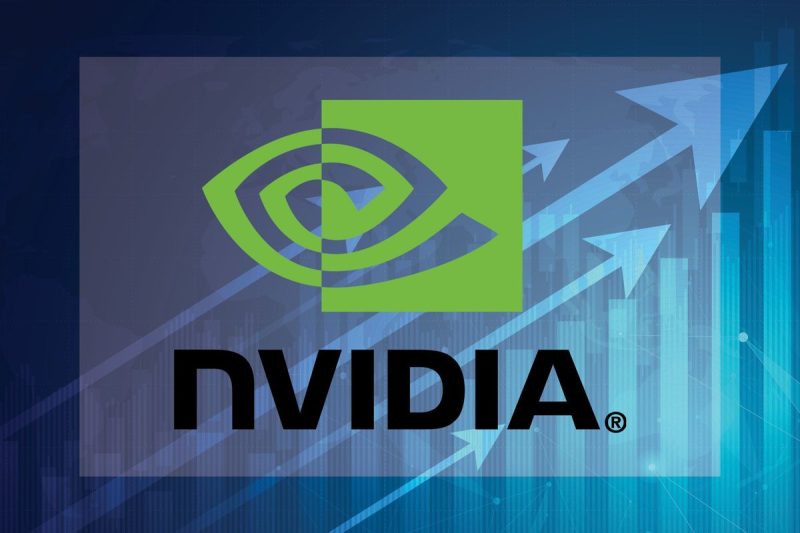NVIDIA (NASDAQ:NVDA) reported strong results for its fourth fiscal quarter of 2024 on Wednesday (February 21).
Quarterly revenue hit a record US$22.1 billion, 22 percent higher than Q3 and up 265 percent compared to a year ago. The company said gains were driven primarily by data center revenue, which came to US$18.4 billion, up 27 percent from Q3 and 409 percent versus last year. Non-GAAP earnings per diluted share were up 28 percent from Q3, coming in at US$5.16; that’s higher than analysts’ expectations of US$4.64 and represents 486 percent year-on-year growth.
Revenue for NVIDIA’s 2024 fiscal year was up 126 percent to US$60.9 billion.
The company has become the poster child for artificial intelligence (AI), and has surpassed analysts’ estimates quarter after quarter. NVIDIA’s Q3 metrics reveal revenue of US$18.12 billion, 34 percent higher than the amount seen in Q2 and up 206 percent year-on-year. Non-GAAP earnings per diluted share of US$4.02 were up 49 percent quarter-on-quarter and nearly six times year-on-year. Growth was again driven by NVIDIA’s data center business.
At the time of its Q3 release, NVIDIA was expecting Q4 revenue of US$20 billion, plus or minus 2 percent. Ahead of Wednesday’s release, analysts were calling for the company’s revenue to more than triple compared to a year ago.
NVIDIA’s share price tripled in value in 2023 and has already gained more than 50 percent in 2024, driven by growing demand for the company’s AI-focused products and services. The firm blazed a trail in the AI industry last year following the emergence of AI-powered chatbots like ChatGPT. Leading the pack of tech giants dubbed the ‘Magnificent Seven,’ NVIDIA overtook Amazon (NASDAQ:AMZN) and Alphabet (NASDAQ:GOOGL) last week to become the world’s third most valuable company. Together, Big Tech has propelled the S&P 500 (INDEXSP:.INX) to new heights, with the index surpassing the 5,000 level on February 8. NVIDIA reportedly accounts for a third of those gains on its own.
The strong performance of NVIDIA’s share price reflects the broader optimism surrounding the tech industry, as well as the continued growth of AI and other cutting-edge technologies. In the days leading up to the company’s Q4 results, investors added nearly US$200 billion in market value in options positions, implying a 10.6 percent move in either direction; analysts at Goldman Sachs (NYSE:GS) referred to NVIDIA as “the most important stock on planet Earth.’
NVIDIA has also received attention for its strategic expansion into the custom chip market. Reporting on the news on February 9, Reuters said that by entering this market, NVIDIA aims to maintain its competitive edge in the booming AI sector. While NVIDIA’s general-purpose H100 and A100 chips have been its driving force, the market for custom AI chips has been dominated by competitors like Broadcom (NASDAQ:AVGO), Marvell (NASDAQ:MRVL) and AMD (NASDAQ:AMD).
These companies are the go-to providers for cloud giants Microsoft (NASDAQ:MSFT), Alphabet and Meta (NASDAQ:META), which have been working on developing their own chips. However, NVIDIA’s expertise in AI combined with its expansion strategy could disrupt these plans. By offering custom chips at competitive prices or with superior performance, NVIDIA could make it harder for other companies to justify the cost and effort of developing custom chips.
Along with AI, NVIDIA is reportedly in talks with Swedish networking and telecommunications company Ericsson to develop a wireless chip for telecom infrastructure. Custom chips for the automotive and gaming industries are also part of the company’s pipeline, according to sources referenced by Reuters.
Despite its recent success, NVIDIA’s performance was volatile leading up to its Q4 results. After closing at US$726.13 on February 16, NVIDIA declined slightly, opening at US$719.05 on Tuesday (February 20). By day’s end, it had fallen 3.4 percent. Although NVIDIA beat out Tesla (NASDAQ:TSLA) as Wall Street’s most-traded stock on Tuesday, it dropped 2 percent that day and a further 2.3 percent in after-hours trading. The downward trend continued on Wednesday, with the stock opening at US$678.41 and declining throughout the day before rebounding to close at US$674.72, down 0.54 percent. It picked up during after-hours trading, rising as high as US$743.98 as of 5:30 p.m. EST.
This volatility could have been influenced by fears of a potential technology bubble resembling the dot-com burst in 2000, a ‘sell-the-news’ mindset and export bans to China stimulating growth in local chip-manufacturing companies.
On the whole, NVIDIA’s strong performance is symbolic of the growing importance of AI in today’s technology landscape, and the company expects growth to continue in the first quarter of its 2025 fiscal year.
In a statement shared on Wednesday, NVIDIA CEO Jensen Huang said, “NVIDIA RTX, introduced less than six years ago, is now a massive PC platform for generative AI, enjoyed by 100 million gamers and creators. The year ahead will bring major new product cycles with exceptional innovations to help propel our industry forward.’
Securities Disclosure: I, Meagen Seatter, hold no direct investment interest in any company mentioned in this article.

